- The VW ID.Buzz borrows simply the correct quantity of retro-Bus cues
- With the ID.Buzz marks the primary totally electrical minivan
- The ID.Buzz prices a flagship $61,545 and has as much as 234 miles of vary
Does it maintain as much as the unique? Does it have to in any respect?
Retro revivals of pop-culture touchpoints, not to mention counterculture icons just like the Volkswagen Bus, are fraught territory. However long-awaited drive time with the 2025 Volkswagen ID.Buzz lately underscored to me that VW has navigated this correctly, and with some noteworthy dollars-and-sense asterisks. It’s an excellent, charming all-electric household car.
Certain, the ID.Buzz might play the retro playing cards mighty robust up entrance, but it surely’s all about setting the primary impression after which not going overboard with it. Alongside the perimeters, it solely borrows some retro-Bus cues within the home windows (be aware that window-within-window) and the beltline. Round again, it’s largely enterprise—extra an evolution of the Eurovan design, with a boxy, squared-off look that doesn’t borrow a lot from the flower-power Kind 2 Bus.
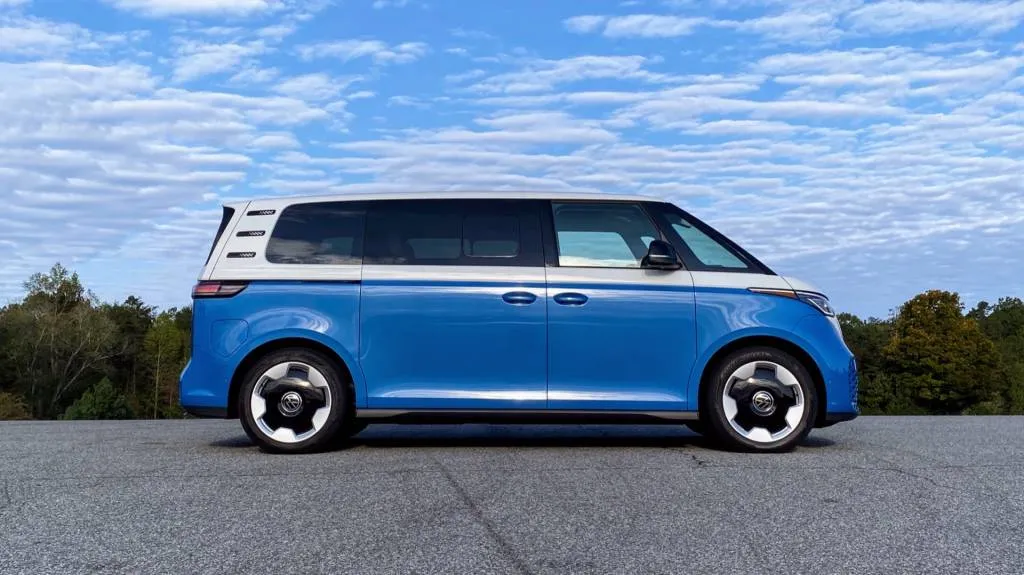
2025 Volkswagen ID.Buzz
It’s been a very long time for the electrical VW Bus
Individuals have had two further years to mull over the ID.Buzz after it went on sale in Europe—and practically eight years in all because it was proven as a production-bound idea car. These couple years introduced a ten.0-inch stretch and a 3rd row to the U.S. model, with no plans to supply the unique two-row model right here. Different enhancements for us embrace an even bigger 91-kwh battery pack, a extra highly effective rear motor, a brand new infotainment interface, and varied software program enhancements.
The latter items match proper right into a cabin design that takes the trendy route, with retro hints saved largely distant. The 12.9-inch touchscreen in the midst of the sprint units a classy look that meshes with what VW has used contained in the ID.4, and fake wooden sprint inlays interrupt what would in any other case be a sea of plastic. An obtainable electrochromic panoramic roof turns a cloudy grey on a sunny day (your “Field of Rain”?), whereas the tall heart console is a cargo field that may be pulled out of the Buzz like a cooler. A number of tiers of bins on the doorways and sprint go away you numerous storage choices for the smaller acts of kindness.
VW ID.Buzz buyers have a selection between seating for six or seven. You get the latter structure with the usual second-row bench for many of the lineup, however all-wheel-drive variations get the six-passenger seating (non-compulsory for $695 on among the different rear-wheel-drive fashions).
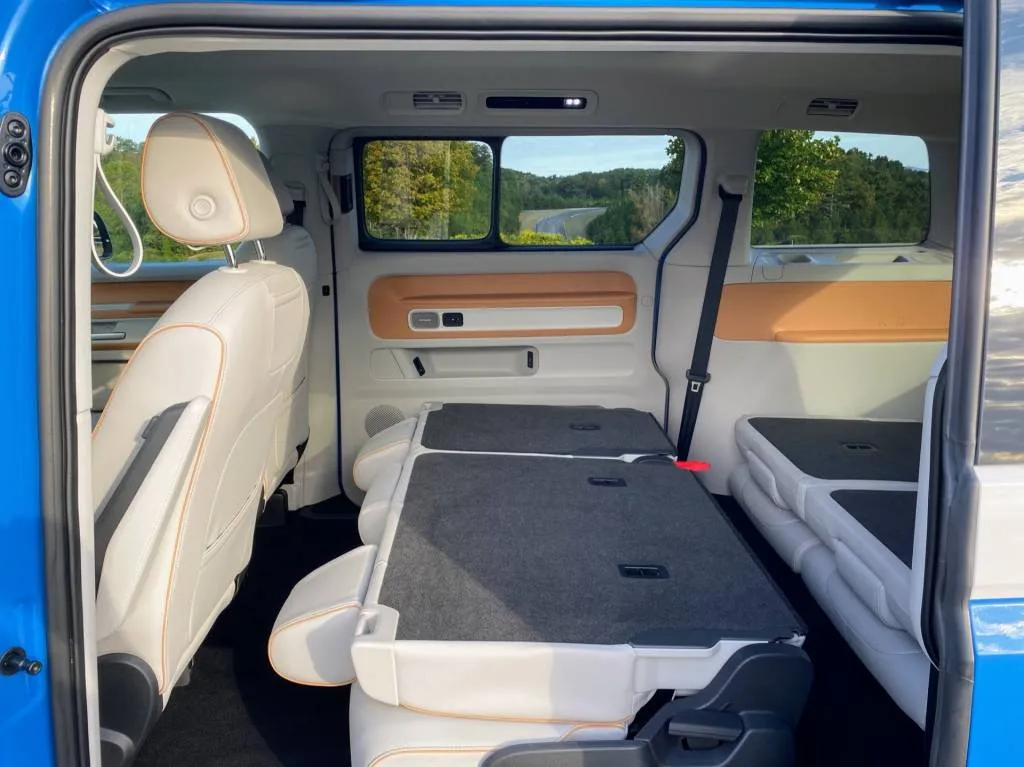
2025 Volkswagen ID.Buzz
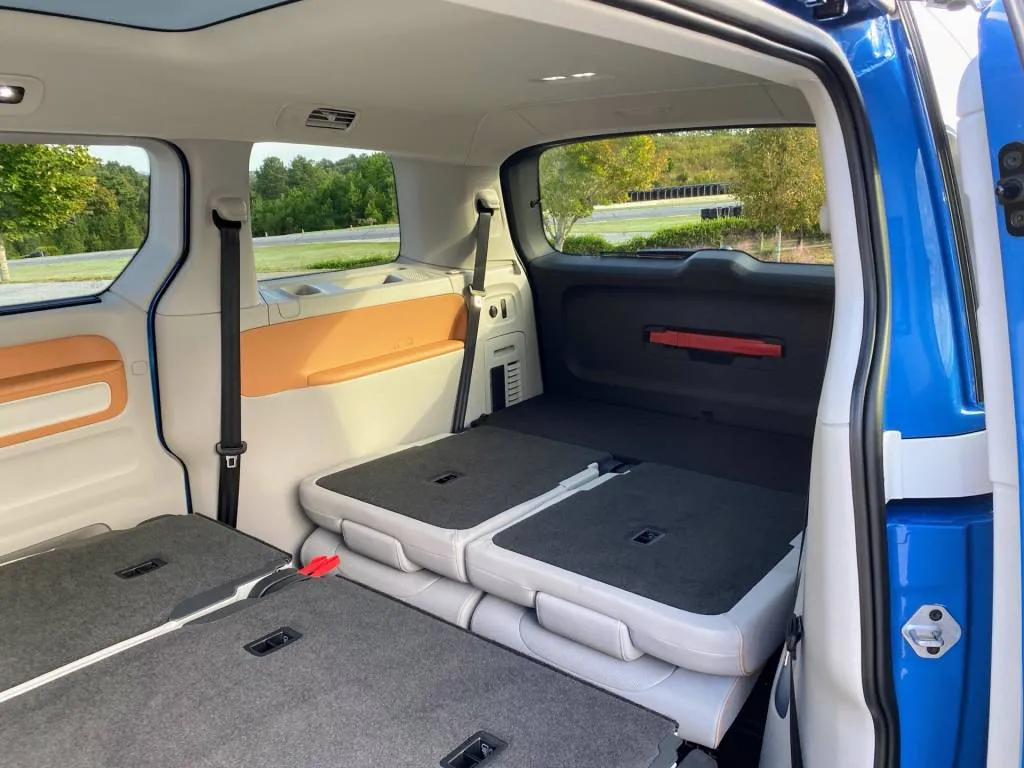
2025 Volkswagen ID.Buzz
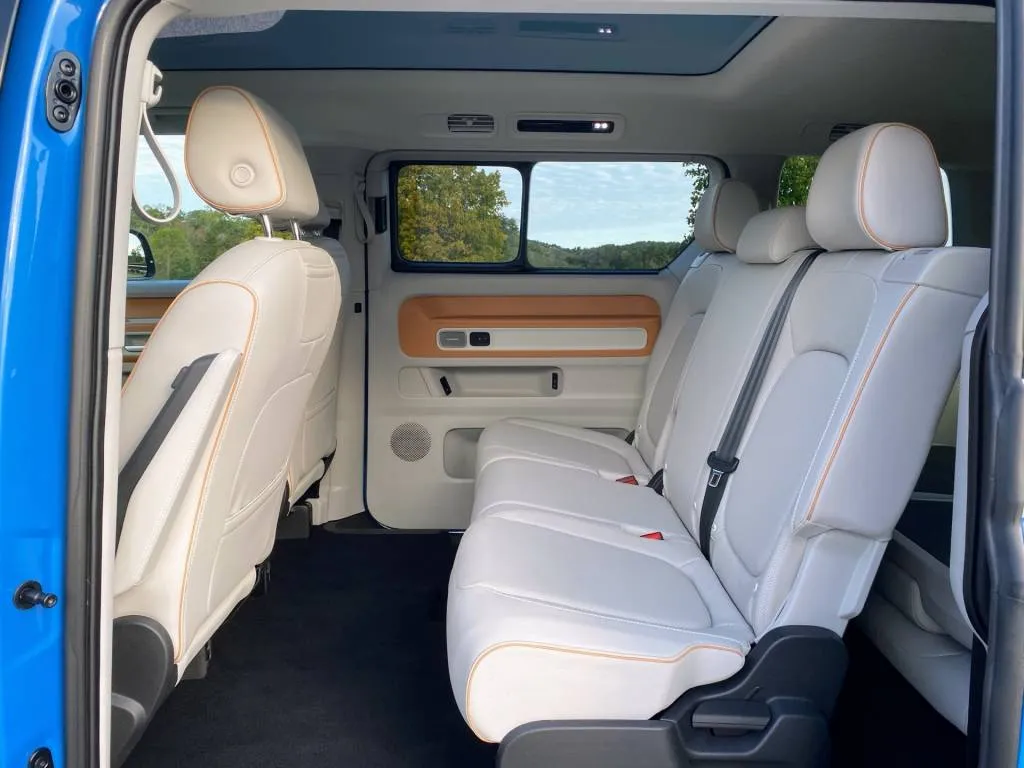
2025 Volkswagen ID.Buzz
ID.Buzz is family-SUV-sized however does extra
The 2025 VW ID.Buzz is true on the coronary heart of family-sized by at the moment’s American car requirements. At 195.3 inches lengthy, driving on a 127.5-inch wheelbase, its three rows have sufficient legroom and headroom for all sizes of adults, and attending to the third row is simpler than in most SUVs because the roof doesn’t taper a lot if in any respect. Sit within the third row of the ID.Buzz and, not like in lots of three-row SUVs, you may skip the claustrophobic emotions and have a view outward. It’s additionally refreshing for adults to not sit so low.
When you’re considering minivan ideas, so are we. The a number of days our editorial workforce spent round an ID.Buzz lately, all of us saved coming again to the concept that that is the primary totally electrical car conceived primarily to be a passenger van. Carrying folks on the highway is its precedence, not off-roading or towing.
That’s to not say the ID.Buzz can’t do these issues, to some restricted diploma. The 6.1 inches of floor clearance must be sufficient to get you to campsites, and VW formally approves the Buzz for towing as much as 2,600 kilos (braked) or 1,650 kilos (unbraked). It received’t tow or off-road like a Rivian R1S, or benefit from its battery pack fairly like a Kia EV9, however its big sliding doorways earn their hold.
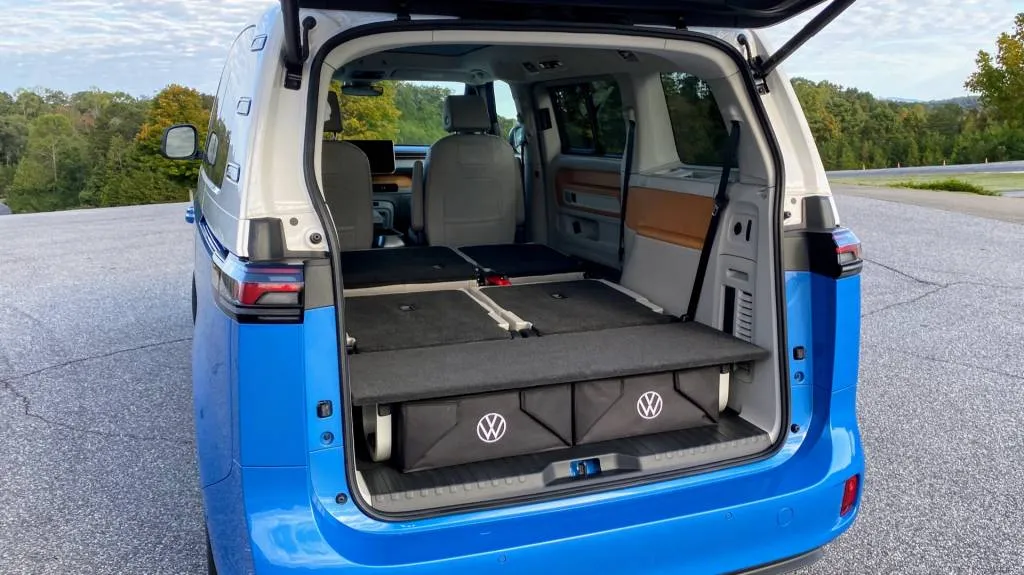
2025 Volkswagen ID.Buzz
Is the ID.Buzz the forefront of an electrical minivan surge?
The ID.Buzz feels much less just like the trailing fringe of a retro revival and extra like the forefront of an electrical minivan wave. Simply as at the moment’s minivans shock with their dealing with and driving attributes, the ID.Buzz is somewhat spectacular within the twisties—so long as you acknowledge its 76.2-inch peak.
Current driving alternatives in Georgia and Michigan confirmed me that the ID.Buzz prioritizes experience high quality, however push it tougher on a twisty highway and its low heart of mass, due to the hefty battery pack and skateboard structure, provides it an surprising poise. I wouldn’t go as far as to name it nimble, and also you sit excessive so the pitch-and-roll motions are exaggerated, however properly weighted steering provides it a precision in lane placement that’s welcome in such a big car.
Because of stellar outward imaginative and prescient—digicam views are nice, however you may’t beat actual home windows—plus a compact-car-like 37.4-foot turning radius for rear-wheel-drive fashions, the Buzz is rather a lot simpler to maneuver within the metropolis and parking heaps than the measuring tape would in any other case recommend. AWD variations bump it out to 42.7 toes.
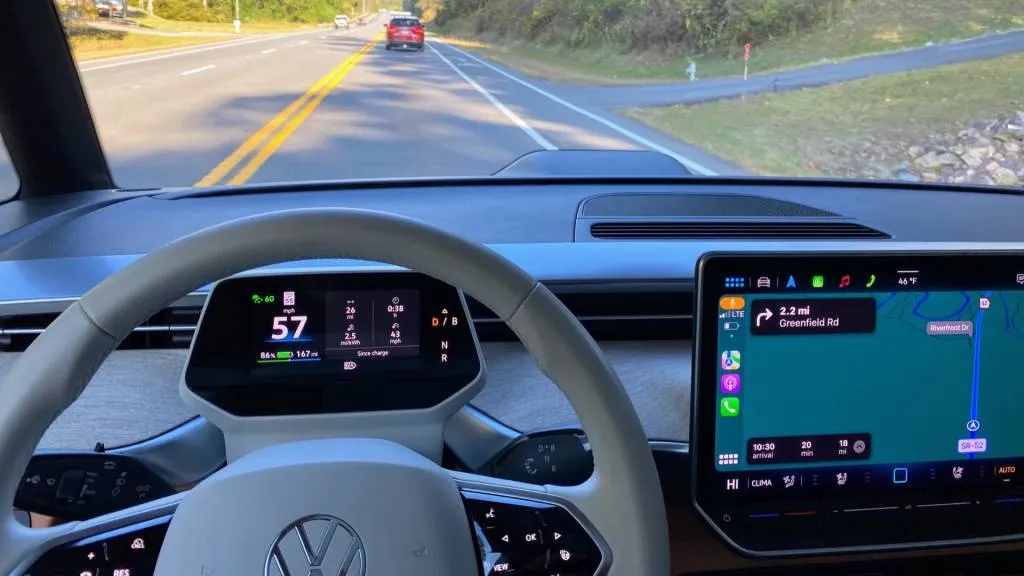
2025 Volkswagen ID.Buzz
VW ID.Buzz drives massive, goals for 200+ miles a cost
The ID.Buzz is obtainable in single-motor rear-wheel-drive and dual-motor all-wheel-drive layouts, with each utilizing the identical uprated electrical drive unit on the rear wheels making 282 hp and 413 lb-ft of torque. Twin-motor variations add an inductive motor on the entrance wheels that makes 99 lb-ft of torque and ups whole output to 335 hp.
It drives massive versus a few of at the moment’s electrical crossovers, however versus different vans and minivans it’s a well-recognized driving expertise. Battery apart, the ID.Buzz has the identical propulsion system that powers the revamped 2024 VW ID.4 lineup, however right here it’s in a car that weighs greater than a thousand kilos further. Whereas moderately perky at decrease speeds particularly, it’s brisk sufficient in most conditions however not downright fast for passing. An all-wheel-drive mannequin did really feel extra energetic on a backroad jaunt than the rear-wheel-drive model, on the expense of steering really feel and considerably extra highway harshness—maybe from the burden distinction.
The Buzz is constructed on the identical MEB platform for inexpensive EVs because the ID.4, with struts in entrance and a multi-link structure in again. It additionally will get entrance disc and old-school rear drum brakes. Regenerative braking is your buddy with this a lot weight, however there merely isn’t sufficient of it, even within the “B” mode that dials in additional regen. A Sport mode additionally bumps it up barely and provides an edge to the accelerator inputs.
The ID.Buzz has an even bigger battery pack than the ID.4, however a smaller one than long-range variations of the Kia EV9 (99.8 kwh). At 91 kwh (86 kwh usable) for the ID.Buzz, it affords EPA rankings of 234 miles for rear-wheel-drive variations and 231 miles with all-wheel drive—numbers that got here near my real-world outcomes. A coefficient of drag of 0.29 absolutely helps with that, though in a primary drive we seen that some wind noise turned noticeable from across the entrance pillars and facet mirrors nearing 70 mph.
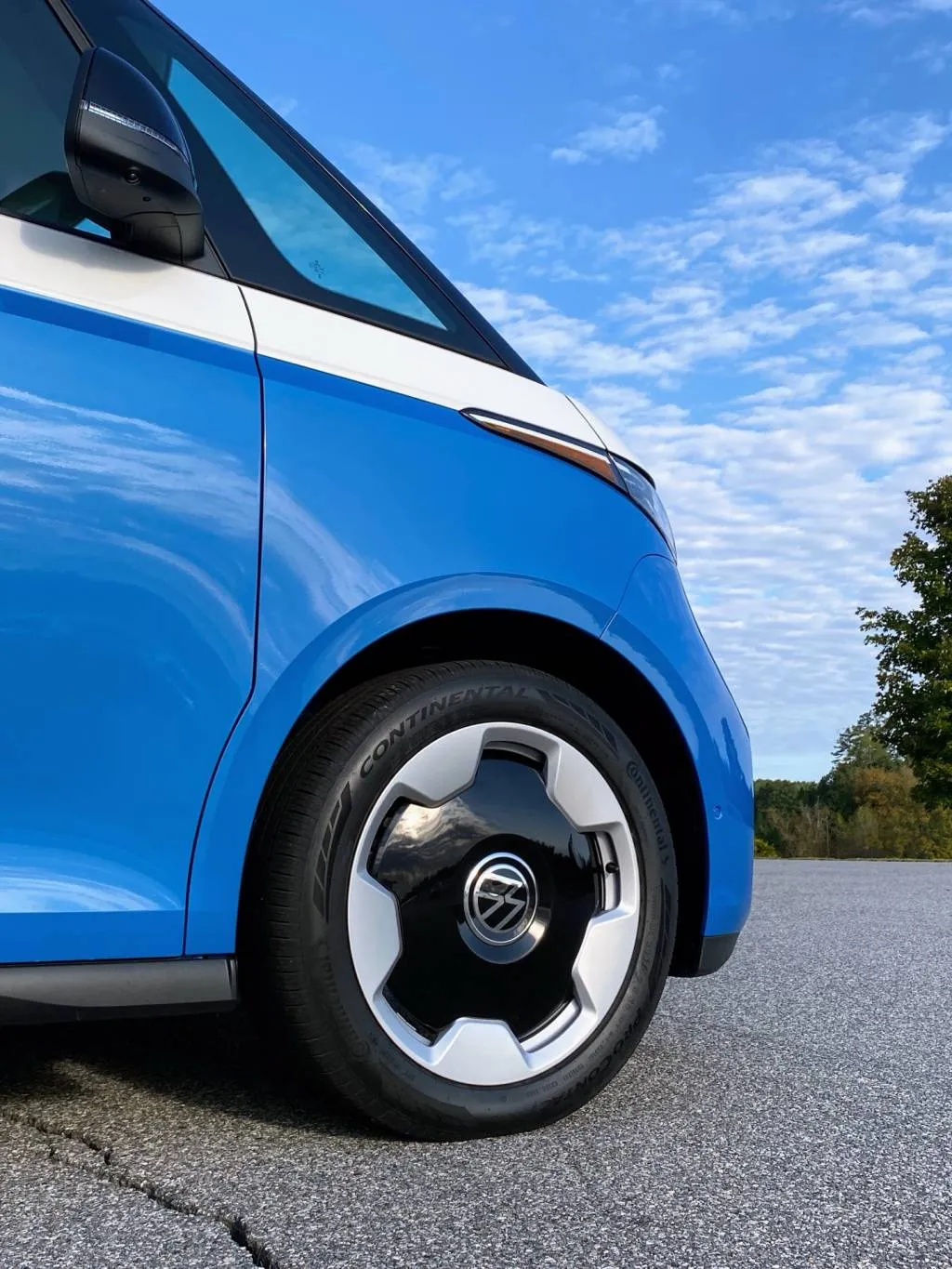
2025 Volkswagen ID.Buzz

2025 Volkswagen ID.Buzz
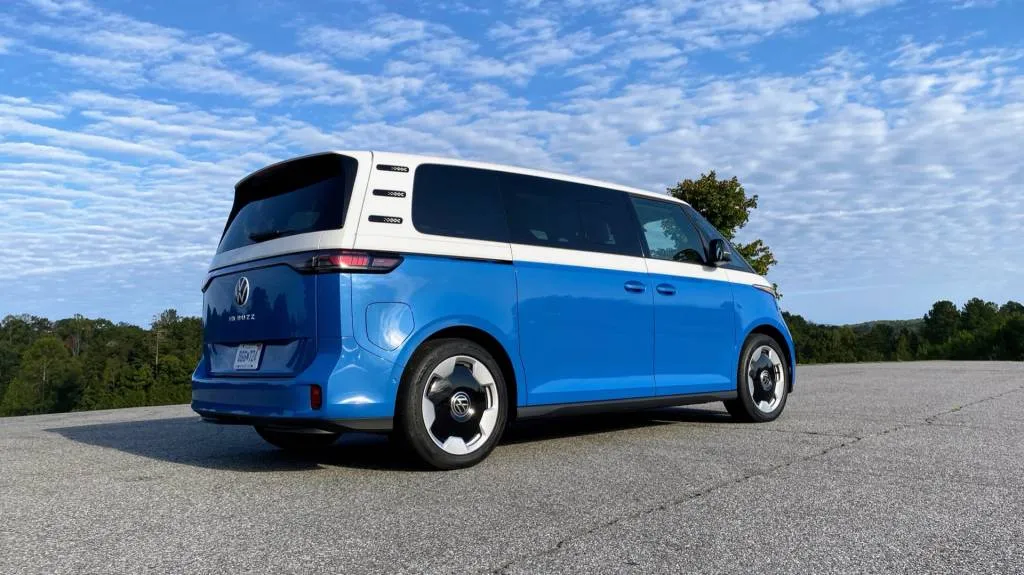
2025 Volkswagen ID.Buzz
ID.Buzz is family-sized—and never low-cost
The 2025 Volkswagen ID.Buzz checks all of the bins of a contemporary household car, together with a versatile second-row structure, heated outboard second-row seats, heated-and-cooled entrance seats, and a second and third row that each fold flat to the identical aircraft. For now those that’ve been round and again with a Bus could be dismayed to seek out there’s no official sleeping accent; however a bit of plywood and a mattress pad would do wonders. The seats might be eliminated (they’re very heavy), and most variations of the Buzz include cargo baskets beneath a sturdy hinged door on the rear of the car, in order to degree out a ground that, below all of it, isn’t completely flat.
For now, VW ID.Buzz costs place this van as a premium car, and a flagship for the VW lineup, beginning at $61,545, together with the $1,550 vacation spot payment, and ranging as much as $71,545. The model we examined, a mid-range Professional S Plus in Cabana Blue and Sweet White ($995 further), with the electrochromic roof ($1,495) optioned, added as much as $67,535. The Buzz is made in Germany, with no plans for U.S. meeting or EV tax-credit eligibility.
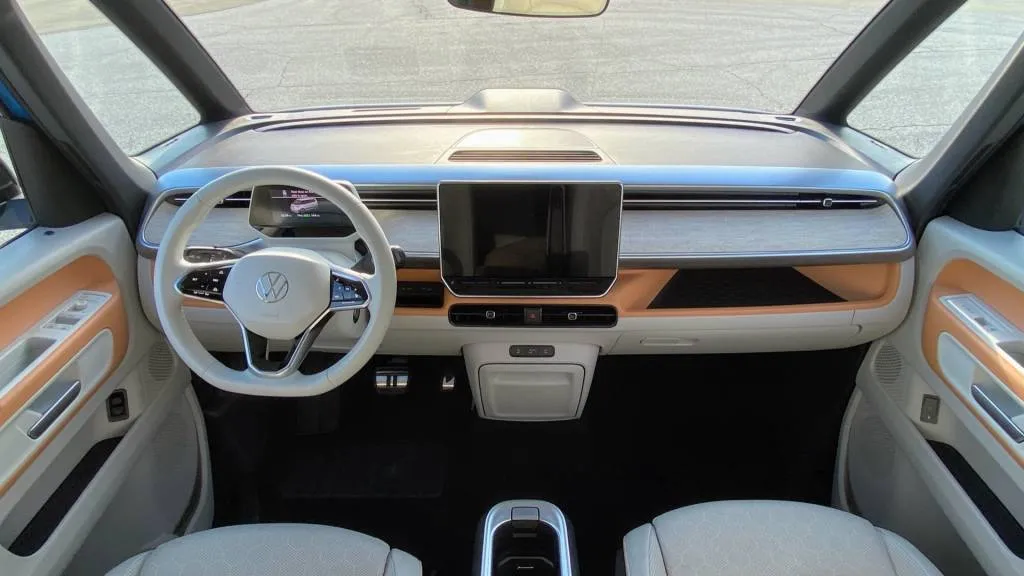
2025 Volkswagen ID.Buzz
Even with the bottom Professional S, the Buzz consists of three-zone local weather management, an influence tailgate, energy sliding doorways, and the total set of active-safety tech. Professional S Plus variations add a head-up show, Harman Kardon audio, a retractable tow hitch, and extra, whereas the highest 1st Version will get the panoramic roof, roof cross bars, and the two-tone look customary.
All this leads again to the query of whether or not the ID.Buzz must be something near what the unique VW Bus was out there—and if Volkswagen will rise to the problem with true electrical VW Bus way of life upfits. The unique took an austere, no-frills path to recognition, and its $2,550 top-end value in 1965 would quantity to about $25,400 at the moment. The worth of all autos has risen, because the bar for requisite security and tech has gone a lot greater. Nevertheless, with the common value of recent autos at round $48,000, the ID.Buzz carries a luxurious value.
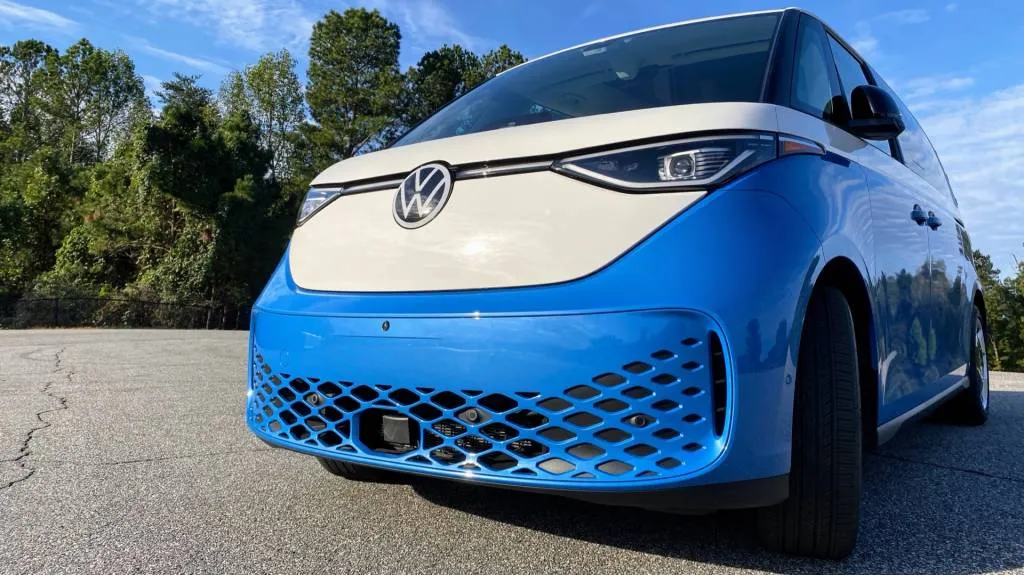
2025 Volkswagen ID.Buzz
Did VW play its retro playing cards good, or misinterpret the room utterly? Whether or not or not VW brings the mass market to the ID.Buzz, or brings the ID.Buzz to the mass market, stays to be seen.


